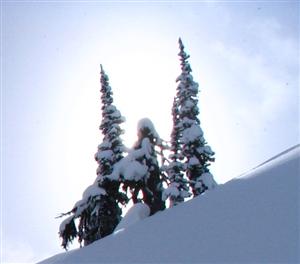Forestry in the Oil Sands - an overview
Forests cover nearly 60% (about 38 million hectares, or 80 million acres) of Alberta’s landbase, with nearly 90% of this forested land in northern Alberta. The boreal forest of northern Alberta is part of a swath of coniferous and deciduous trees, muskeg, and wetlands that extends around the northern hemisphere. Tree species of the boreal forest include fir, spruce, pine, tamarack, birch, aspen, and balsam poplar.
Timber harvested from the boreal forest is transported to sawmills and pulpmills, where it is processed into both primary and secondary forest products. Lumber is produced mainly from white spruce and lodgepole pine. The slow growth of these trees resulting from the northern climate leads to close-grained, strong, and lightweight lumber suitable for many purposes, including building and framing (AFPA 2005). Alberta lumber is distributed throughout Canada and is exported to countries all over the world (NADC 2005).
The pulp and paper mills of northern Alberta use high-strength wood fibre from lodgepole pine and white spruce trees, as well as aspen and balsam poplar (AFPA 2005; Al-Pac 2008). This pulp is essential for the production of paper and paper products that people use every day.









